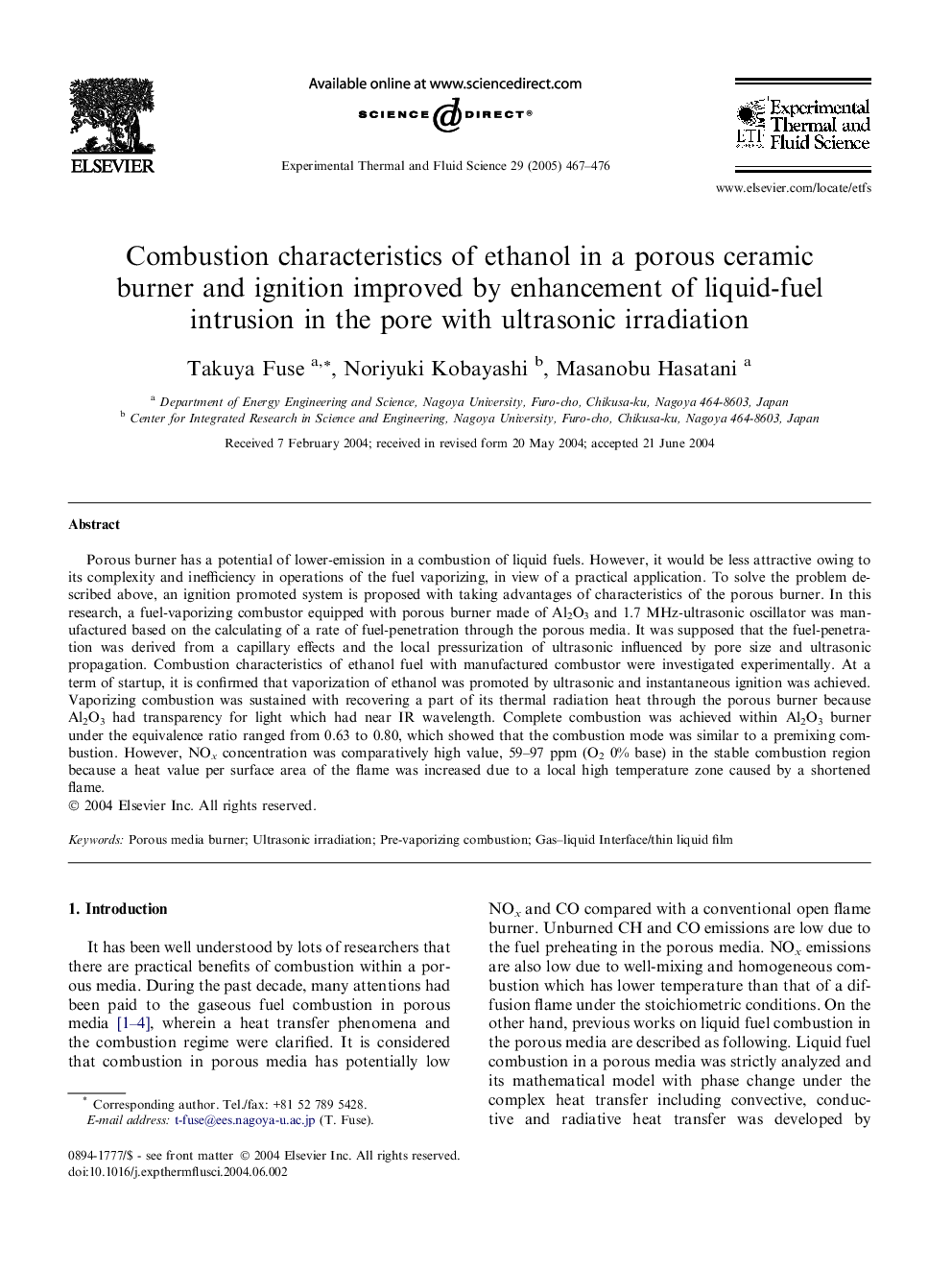| کد مقاله | کد نشریه | سال انتشار | مقاله انگلیسی | نسخه تمام متن |
|---|---|---|---|---|
| 10392252 | 885070 | 2005 | 10 صفحه PDF | دانلود رایگان |
عنوان انگلیسی مقاله ISI
Combustion characteristics of ethanol in a porous ceramic burner and ignition improved by enhancement of liquid-fuel intrusion in the pore with ultrasonic irradiation
دانلود مقاله + سفارش ترجمه
دانلود مقاله ISI انگلیسی
رایگان برای ایرانیان
موضوعات مرتبط
مهندسی و علوم پایه
مهندسی شیمی
جریان سیال و فرایندهای انتقال
پیش نمایش صفحه اول مقاله

چکیده انگلیسی
Porous burner has a potential of lower-emission in a combustion of liquid fuels. However, it would be less attractive owing to its complexity and inefficiency in operations of the fuel vaporizing, in view of a practical application. To solve the problem described above, an ignition promoted system is proposed with taking advantages of characteristics of the porous burner. In this research, a fuel-vaporizing combustor equipped with porous burner made of Al2O3 and 1.7 MHz-ultrasonic oscillator was manufactured based on the calculating of a rate of fuel-penetration through the porous media. It was supposed that the fuel-penetration was derived from a capillary effects and the local pressurization of ultrasonic influenced by pore size and ultrasonic propagation. Combustion characteristics of ethanol fuel with manufactured combustor were investigated experimentally. At a term of startup, it is confirmed that vaporization of ethanol was promoted by ultrasonic and instantaneous ignition was achieved. Vaporizing combustion was sustained with recovering a part of its thermal radiation heat through the porous burner because Al2O3 had transparency for light which had near IR wavelength. Complete combustion was achieved within Al2O3 burner under the equivalence ratio ranged from 0.63 to 0.80, which showed that the combustion mode was similar to a premixing combustion. However, NOx concentration was comparatively high value, 59-97 ppm (O2 0% base) in the stable combustion region because a heat value per surface area of the flame was increased due to a local high temperature zone caused by a shortened flame.
ناشر
Database: Elsevier - ScienceDirect (ساینس دایرکت)
Journal: Experimental Thermal and Fluid Science - Volume 29, Issue 4, April 2005, Pages 467-476
Journal: Experimental Thermal and Fluid Science - Volume 29, Issue 4, April 2005, Pages 467-476
نویسندگان
Takuya Fuse, Noriyuki Kobayashi, Masanobu Hasatani,